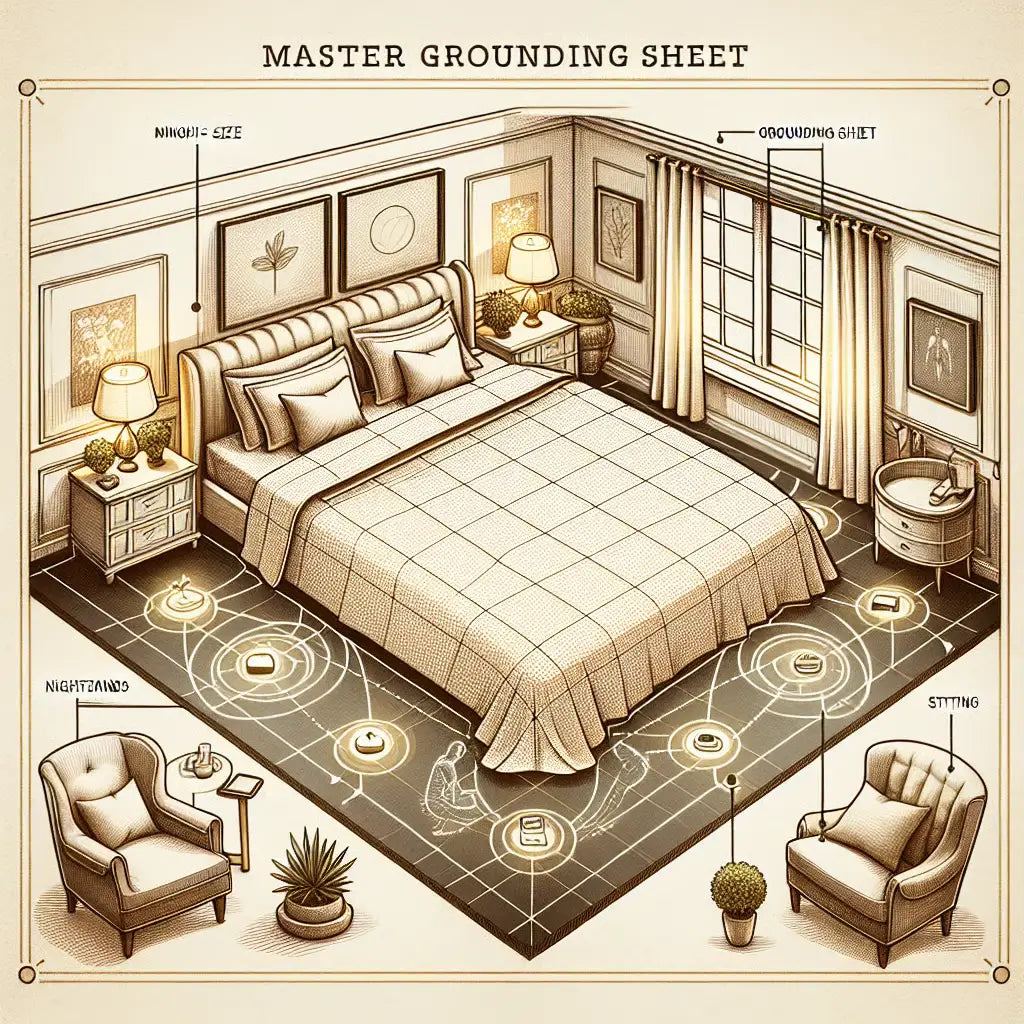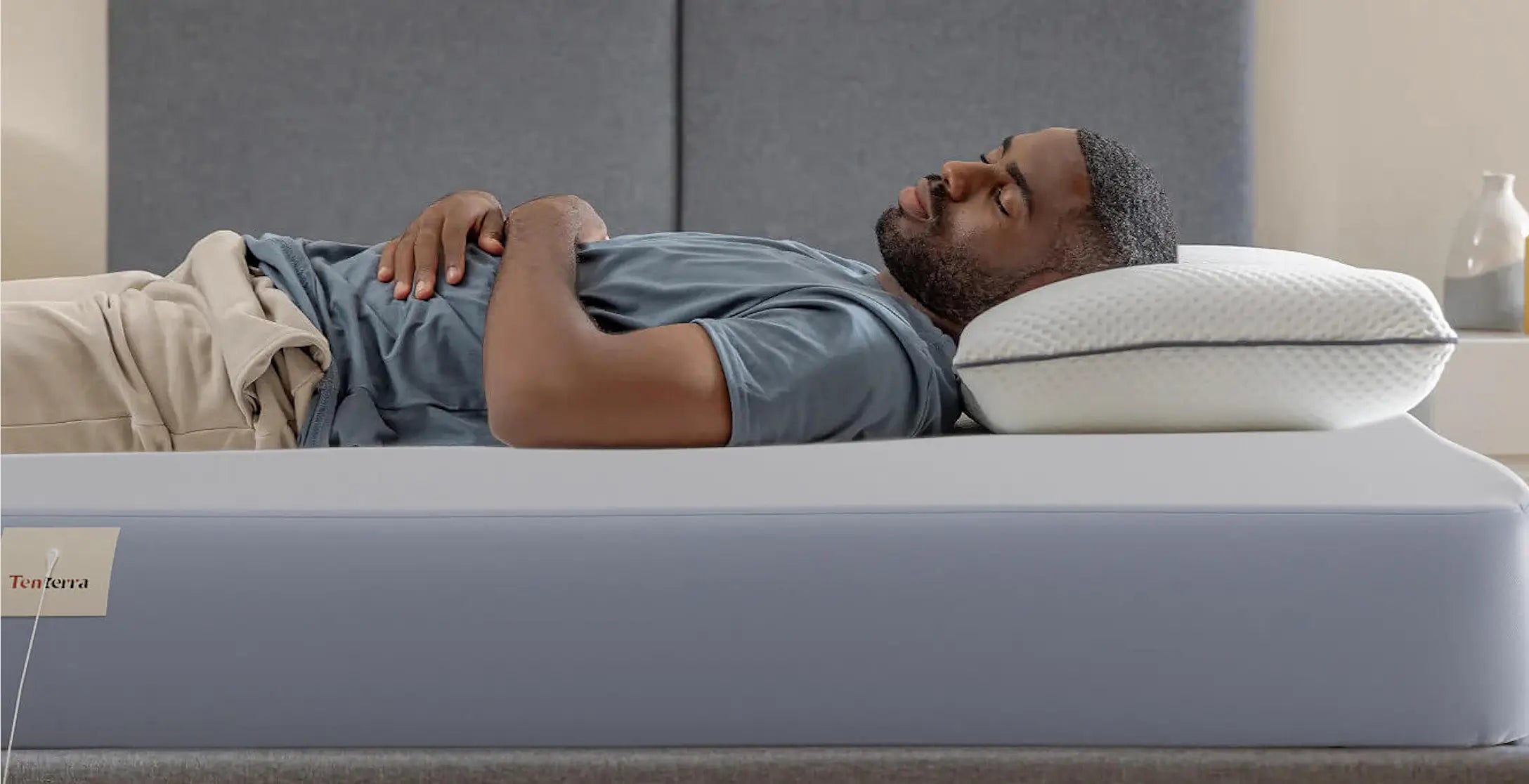
Grounding Sheet Placement Guide: Master Bedroom Setup for Maximum Benefits
Share
By Adam & Dr. Shadi Khan , Sleep Wellness Expert & Certified Grounding Practitioner
Last Updated: January 2025
As a certified grounding practitioner with over 8 years of experience helping clients optimize their sleep environments, I've witnessed firsthand the transformative effects of proper grounding sheet placement. Whether you're new to earthing or looking to maximize your current setup, this comprehensive guide will ensure you're getting the most from your grounding practice.
Click here to view our grounding products and solutions.
Understanding Grounding Sheet Fundamentals
Grounding sheets, connect your body to the Earth's natural electrical field while you sleep. This connection helps neutralize free radicals, reduce inflammation, and promote deeper, more restorative sleep. However, the placement and setup of your grounding sheet can significantly impact these benefits.
The key to successful grounding lies in maintaining consistent skin contact with the conductive material throughout the night. This means proper sizing, secure attachment, and strategic positioning are crucial for optimal results.
Bed Types and Grounding Sheet Compatibility
Platform Beds and Modern Frames
Platform beds work exceptionally well with grounding sheets due to their solid, stable surface. The lack of box springs eliminates potential interference from metal coils that might affect the grounding connection. When setting up on a platform bed, ensure the grounding cord has a clear path to your electrical outlet without creating trip hazards.
Traditional Box Spring Setups
Box spring beds require special attention to cord placement. Metal coils in box springs don't interfere with grounding effectiveness, but they can create routing challenges for your grounding cord. Position the cord along the bed frame's edge, securing it with cord clips to prevent tangling or disconnection during sleep movements.
Adjustable and Smart Beds
Modern adjustable beds present unique opportunities and challenges. The motorized components don't affect grounding functionality, but cord management becomes critical. Route your grounding cord away from moving parts and ensure it has enough slack to accommodate bed position changes without disconnection.
Mattress Compatibility Considerations
Memory Foam and Latex Mattresses
Memory foam and latex mattresses provide excellent surfaces for grounding sheets. Their consistent density ensures even contact distribution, maximizing the conductive surface area against your skin. Tenterra's 18-inch depth design with elastic wrapping accommodates these thicker mattress profiles perfectly, maintaining a secure fit even as memory foam contours to your body.
Innerspring and Hybrid Mattresses
Traditional innerspring and hybrid mattresses work well with grounding sheets, though the varied surface texture may create minor contact variations. The key is ensuring the sheet remains taut across the mattress surface. Tenterra's Tencel Lyocell material offers superior elasticity compared to basic cotton alternatives, maintaining consistent contact even with surface irregularities.
Pillow-Top and Euro-Top Mattresses
Extra-thick mattresses with pillow-tops require careful attention to sheet depth. Standard grounding sheets often slip or bunch on these surfaces. Tenterra's 18-inch depth design specifically addresses this challenge, providing ample material to secure around even the thickest mattress configurations while maintaining the snug fit essential for consistent grounding contact.
Multiple Sleeper Scenarios
Couples Sharing a Grounding Sheet
For couples sharing a bed, a single grounding sheet can provide benefits to both partners, though contact quality may vary. The person with more direct skin contact to the sheet will experience stronger grounding effects. Position the sheet to maximize contact for the partner who experiences more sleep disturbances or inflammation issues.
Individual Grounding Preferences
Some couples prefer individual grounding setups, especially when sleep positions or temperature preferences differ significantly. Two separate grounding sheets can be positioned on each side of the bed, each with its own grounding cord connection. This approach ensures optimal contact for both partners regardless of sleep position or movement patterns.
Guest Room Considerations
Guest rooms benefit from simple, foolproof grounding sheet setups. Use clear, written instructions for guests unfamiliar with grounding practices. Position the grounding cord connection at the foot of the bed to minimize confusion and ensure the setup remains intact throughout their stay.
Grounding Cord Placement Strategies
Head-of-Bed Positioning
Placing the grounding cord connection at the head of the bed offers several advantages. This position typically provides the shortest distance to wall outlets, reducing cord length requirements and trip hazards. It also positions the connection point away from foot traffic areas around the bed.
The head positioning works particularly well for back and side sleepers who maintain relatively stable upper body positions. This setup ensures consistent grounding contact with your torso and vital organs throughout the night.
Foot-of-Bed Positioning
Foot-of-bed cord placement offers unique benefits for restless sleepers and those who frequently change positions. This positioning accommodates various sleep orientations while maintaining grounding contact through leg and foot contact points.
For individuals dealing with lower body circulation issues or leg discomfort, foot positioning may provide more targeted benefits. The grounding connection through your feet taps into the body's natural electrical pathways, potentially offering enhanced circulation benefits.
Side-Mounting Options
Side cord placement works well for beds positioned against walls or in corners where head or foot placement isn't practical. This approach requires careful cord management to prevent disconnection during sleep movements, but offers flexibility for challenging bedroom layouts.
The Tenterra Advantage: Tencel Lyocell vs. Cotton
Traditional cotton grounding sheets, while functional, present several limitations that Tenterra's Tencel Lyocell material overcomes. Cotton tends to lose elasticity over time, leading to loose fits and reduced grounding contact. It also retains moisture and heat, potentially causing discomfort during extended use.
Tenterra's Tencel Lyocell material offers superior breathability, moisture management, and durability. This eucalyptus-derived fiber maintains its elastic properties through repeated washing cycles while providing a silky-smooth texture that enhances comfort. The material's natural antimicrobial properties also contribute to a healthier sleep environment.
The advanced fiber structure of Tencel Lyocell maintains better conductivity consistency compared to cotton alternatives, ensuring more reliable grounding connection throughout the night.
Installation Best Practices
Pre-Installation Preparation
Before installing your grounding sheet, test your electrical outlet with a ground checker to ensure proper grounding connection. Clean your mattress surface and remove any protective covers that might interfere with sheet placement.
Step-by-Step Installation
-
- Connect the grounding cord to your sheet's snap connector
- Route the cord to your chosen outlet location, securing with clips
- Fit the sheet starting from the head corners, working toward the foot
- Ensure elastic wrapping is snug but not overly tight
- Connect the grounding plug to your electrical outlet
- Test the connection with a continuity meter if available
Maintenance and Care
Regular maintenance ensures optimal grounding performance. Wash your Tenterra grounding sheet weekly using mild, natural detergents. Avoid fabric softeners or bleach, which can damage the conductive fibers. Air dry when possible to preserve the material's elasticity and conductivity.
Frequently Asked Questions
Q: How do I know if my grounding sheet is working properly?
A: Most people notice improved sleep quality, reduced morning stiffness, and better overall energy within 1-2 weeks. You can also use a continuity meter to test the electrical connection from the sheet to your outlet's ground.
Q: Can I use a grounding sheet with an electric blanket?
A: Yes, grounding sheets work safely with electric blankets. Place the electric blanket over your regular bedding, above the grounding sheet. The grounding connection remains effective through the layers.
Q: Do pets interfere with grounding sheet effectiveness?
A: Pets sharing your bed won't interfere with grounding effectiveness. In fact, they may experience grounding benefits as well when in contact with the sheet.
Q: How often should I replace my grounding sheet?
A: With proper care, Tenterra's Tencel Lyocell grounding sheets typically last 3-5 years. Replace when you notice significant elasticity loss or visible wear to the conductive fibers.
Q: Can I cut my grounding sheet to fit a smaller bed?
A: While possible, cutting may affect the elastic fit and conductive properties. It's better to tuck excess material under the mattress or consider purchasing the appropriate size for optimal performance.


